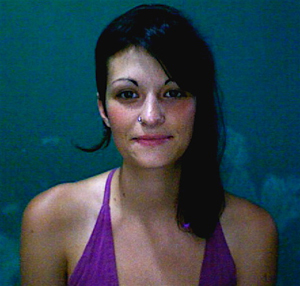Ready to learn more?
Get all the details straight to your inbox!

The priority deadline for academic application is March 15. To book a personalized enrolment counselling appointment, contact our Recruitment Office at 1-306-206-2117.

Eating better means studying better. The Luther Cafeteria offers fresh, healthy, nutritious meals seven days a week with a self-serve “all-you-care-to-eat” concept students prefer.

Wondering where to live? Our student residence, The Student Village at Luther College, is considered a great choice for first-year student accommodation. Individual private rooms mean you can stick to your own schedule and you never have to deal with roommate hassles.

Luther College is recognized for its high standards of teaching, focused research, and one-on-one academic advising. We value and protect this heritage of excellence in scholarship, freedom of inquiry, and faithful seeking after truth.

To enrol as a Luther College student, simply fill out the University of Regina application form and select Luther as your campus of choice.

Luther College offers Bundles programs that group together first-year students and classes to give you a great start and help ease the transition from high school to university.

Luther College appeals to students who want to study in a safe, nurturing, and inclusive environment. We welcome students of all faiths, ethnicities, backgrounds, religions, genders, and sexual orientations.

You can book a tour of Luther College, the U of R campus, and our student residence, The Student Village at Luther College, any time throughout the year. Contact our Recruitment Office at 1-306-206-2117.
Get all the details straight to your inbox!
Here is the time of the sayable, here is its homeland.
Speak and bear witness.
– Rainer Maria Rilke, “Ninth Elegy”
To see clearly and without flinching,
without turning away,
this is agony, the eyes taped open
two inches from the sun.
The razor across the eyeball
is a detail from an old film.
It is also a truth.
Witness is what you must bear.
– Margaret Atwood, “Notes towards a Poem That Can Never Be Written”
In the poem “Reliquary,” printed in her collection Light Falls through You from 2000, Anne Simpson writes, “Here is a bone resembling a word” (1) and, later, “A skull is a verb that can’t be conjugated. Not amo, not amas, not amat” (32). “Reliquary” is about the genocide that took place in Rwanda in 1994 – in her notes to the collection Simpson writes that it “depended” on the article “‘Rwanda’s ghosts scream bloody murder,’ by Claude Adams and Patricia Chew, published in the Globe and Mail on April 4, 1998” (77). It is also about writing in the face of atrocity, or deliberately treating instances of atrocity in poetry. Likewise, the concept of writing atrocity helps to contextualize Simpson’s arresting juxtapositions. If we ask, “how does a skull compare with a verb?” we can equally ask, “how do we write about physical and spiritual, individual and mass murder, rape and suffering, in a way that might help us comprehend, or at least remember?” Simpson comes up against this question in Light Falls through You, and if difficult to answer, it provides rich provision for poetic examination.
It also resonates in Robert Hass’ collection Time and Materials: Poems 1997-2005, which, like Simpson’s, coalesced around the turn of the millennium. In these poems, Hass observes the world in all its complexity, but the focus of this collection is also recurrently ‘political,’ a record of historic atrocity and cultural cataclysm. This, at least, is the immediate impression made by works such as “Winged and Acid Dark,” “A Poem,” “Bush’s War,” and “On Visiting the DMZ at Panmunjom: A Haibun,” but themes of political concern and the resurgence of history also play out, more subtly, in many other poems from the collection and are interwoven with personal and lyrical reflections.
Moreover, at the same time as social concerns are woven throughout Hass’ text, the concept of political engagement, or ‘bearing witness’ to atrocity, is not the only way to read Time and Materials, and cannot comprehend the whole of Hass’ text, though it functions significantly in the collection. Other commentators have elucidated different ways of reading Hass, hardly touching the political or social dimensions. For example, in an analysis of Time and Materials for the Harvard Review, intended to “delineat[e] similarities and differences between this and Hass's past writings,” Tess Taylor characterizes the work, first, as concerned with romantic relations: Hass “continues to be a poet of love relationships; this book is full of he and she, making love, making curry, using wry little sentences like ‘Tender little Buddha, she said, / Of my least Buddha-like member’” (209). Second, as concerned with exploring other forms of art: “it is not as much a representation of a real world (of, say, fish and food and cheese) but a representation of the represented one (of, say, paintings and paint.) A book about art-making, it veers from and then returns to the questions: in what way does art make time feel material? In what way is time art's material?” (209).
In the same review, however, Taylor writes that “Timeand Materials is less about loss and more about wounds,” and that “Hass is nothing if not fascinated with seduction. But it is destruction, not elegy, that seduces him here” (209). These descriptions help to uncover some of the layers of meaning in Time and Materials, for in this text Hass is revealed as seduced by destruction, and obsessed by wounds. These are wounds that have formed in our society, in our consciousness, gouged out by our own human penchant for atrocity. In this same way, Hass is fascinated by the action of the painter Gerhard Richter, whose work is the inspiration for the title poem “Time and Materials.” Through this “‘Action painting,’” (3.3) or action ‘“paining’,” (4.1) Hass writes, “The painter gets to behave like time” (3.4). But there is also something more violent, more deliberate than the passage of time at work. There is also history, and the scars that this entails. Therefore, the painter’s actions – “To score, to scar, to smear, to streak,/To smudge, to blur, to gouge, to scrape” (3.1-2) are equal to “Some vertical gesture…the way that anger/Or desire can rip a life apart” (6.1-2). Ultimately, they also equal, or produce, “Some wound of color” in the midst of the painting, some evidence of violence in this abstract piece of art, just as the “dish of raspberries and chocolate” brought out in “I Am Your Waiter Tonight and My Name Is Dmitri” becomes a “subtle transfiguration of the colors of excrement and blood” (96-97), and reminds us of the bloody heritage of Dmitri’s family.
In his discussion of “I Am Your Waiter Tonight and My Name Is Dmitri,” in the article “The World Is Too Much with Us,” William Logan criticizes Hass for the fact that he “can't devour a piece of Parma ham without letting the reader know that somewhere a city is getting sacked” for “food all too often makes him think of mass murder” (61). That is, Logan is bothered by Hass’ penchant for mixing “lush,” “lyrical innocence” with “conscience” and an awareness of the world’s horrors (61), suggesting rather that these realms should be separate, or “conscience” should be absent from the poems altogether. To be fair, Hass does refuse these distinctions, but if his poems then present an “interpretive problem,” (Forché n.p.) then they bear further examination, rather than rejection. Indeed, both Hass’ poetry in Time and Materials and Simpson’s poetry in Light Falls through You, particularly the poem “Reliquary,” is in need of further discussion as an instance of poetry that specifically deals with atrocity, but from an outside/observer’s perspective. As such, they come up against Carolyn Forché’s conception of “poetry of witness,” but this concept alone is not enough to understand these works. They do, like Forché identifies, encounter the dichotomy that is sometimes set up between the personal and the political in poetry. However, Hass and Simpson’s poetry on atrocity is not a recounting of events that the authors have lived, nor is it an exploration of trauma that they are forced to deal with because it encompasses their world. Rather, they explore atrocity as a part of their vision of the world. Hass’ poems, moreover, directly address Aristotelian notions of history and poetry, and indeed contemporary notions of how we should talk and write about atrocity in a moral sense.
The idea of a poetry of witness has been applied to a range of works over the past few decades; Julia Reibetanz writes of Simpson’s “Reliquary” that “This…is witness poetry, with its insistent 'Here is,' 'Here are,' 'This was’” (47). To really speak of the idea of poetry of witness, as a concept and generic category, however, we have to look to Carolyn Forche who gave the concept a more specific definition and delineation through her article “Twentieth Century Poetry of Witness” from 1993. This article accompanied the bookAgainst Forgetting: Twentieth-Century Poetry of Witness which Forché edited, and which collects together the “work of 145 poets who have written about their experiences of social and political hardship during” the twentieth century. These poets, Forché writes, “have personally experienced atrocity, persecution, exile or worse…[they] have been exposed to the worst of humanity with none of the protections that culture is supposed to represent” (Forché n.p.). Nevertheless, ‘poetry of witness’ is not limited to poets who have – I will say ‘forcibly’ for lack of a better term – experienced the worst of humanity. Nor does Forché intend it to be so. Indeed, Forché explores this term as a way to understand her own poetry and the direction it took after she worked as a human rights activist in El Salvador, the West Bank, Lebanon and South Africa. She writes, of her experience, that
My new work seemed controversial to my American contemporaries, who argued against its “subject matter,” or against the right of a North American to contemplate such issues in her work, or against any mixing of what they saw as the mutually exclusive realms of the personal and the political. Like many other poets, I felt that I had no real choice regarding the impulse of my poems, and had only to wait, in meditative expectancy.
As I suggested before, perhaps it is this mixing of the ‘personal’ and the ‘political,’ that Logan, in reviewing Time and Materials, finds offensive in an otherwise admirable collection. Logan writes that “I doubt I'll like a book of American poetry better all year; but it's a pity Hass has become a lyric poet with a conscience, because he can’t make that conscience shut up” (61).
Nevertheless, Hass is compelled to write about incidences of historical and global violence, and along the way he questions what poetry should be. For her part, this experience with critics led Forché to realize
that the arguments about poetry and politics had been too narrowly defined…Poetry of witness presents the reader with an interesting interpretive problem. We are accustomed to rather easy categories: we distinguish between “personal” and “political” poems--the former calling to mind lyrics of love and emotional loss, the latter indicating a public partisanship that is considered divisive, even when necessary…We need a third term, one that can describe the space between the state and the supposedly safe havens of the personal. Let us call this space “the social.”
Situating Hass’ poems in a “social” space is useful, particularly when considering poems such as “The World as Will and Representation,” which begins as a memory from the speaker’s childhood, and continues on to encompass an aspect of life in the nineteen-forties, which, in retrospect, is connected to ancient Rome through the Aeneid. Stephen Burt discusses this poem in his examination of Time and Materials, titled “The Limits of Influence,” where he writes that
The strongest poem here is public and private at once…”The World as Will and Representation'” depicts one episode from the unhappy life of Hass's mother, when she was made to take “a drug called antabuse,” which “makes you sick if you drink alcohol.”…Against that memory Hass…sets a scene from Virgil's '”Aeneid,”…In this scene Aeneas flees his burning city '”with his father / On his shoulders, holding his young son's hand”…The helplessness of a child and the peril of a parent can dictate the way we see the larger world: public and private, personal and national, now seem to Hass – as they did to Aeneas – sadly impossible to keep apart.
Nowhere, however, is this elemental fusion of “public and private, personal and national” so evident in Time and Materials as in the poem “I am Your Waiter Tonight and My Name is Dmitri.” The generational history of a fictional individual, the poem explores how society enacts upon the individual. History and culture seem to determine, beyond personal autonomy, the direction of this family. The poem serves as a witness to this process, to horrific events that are presented as innate to human kind, and to several of the major violent episodes of the twentieth century. In this poem, it is all connected, so that Hass writes
you can get an adolescent/Of the human species to do almost anything…
Which is why they are tromping down a road in Fallujah
In combat gear and a hundred and fifteen degrees of heat
This morning and why a young woman is strapping
Twenty pounds of explosives to her mortal body in Jerusalem.
Dulce et decorum est pro patria mori
The allusion to Horace, and to Wilfred Owen, pulls us outside of this particular poem. Hass shows us that although these characters are individuals, there is nothing individual or autonomous about them. They are connected to those who died in Rome and to those who died in the First World War, which inspired Owen’s poem “Dulce et Decorum Est,” where he calls this Latin phrase “The Old Lie.” Indeed, the generations of Dmitri’s family can be traced by the ‘great’ wars. We learn of two men, Dmitri’s ancestors, that one “died in the mud at the Battle of the Somme/From a piece of shrapnel manufactured by Alfred Nobel,” and another, his descendent, “In Iwo Jima died. Gangrene” (64). In “I Am Your Waiter Tonight” Hass also explores the personal and the political by reflecting back on the practice of writing about atrocity. Forché writes, concerning the poetry of witness that these “poems that are as much ‘about’ language as are poems that have no subject other than language itself” (n.p.) Like Simpson in “Reliquary” who writes about the process of turning bones into language, Hass takes this literally and reflects back on the process of writing about violence in poetry. Thus, in “I Am Your Waiter Tonight” we get the following passage:
It is important to remember that the teeming cities of the nineteenth century
Were site central for horsewhipping…according
To the novels of the period which may have been noticing this
For the first time or registering an actual statistical increase
In either human brutality or the insurrectionary impulse
In horses…
As with these nineteenth-century authors, Hass bears witness to this violence, and through his poetry we might notice an abundance of human cruelty in the twentieth century, although it might just be that it is appearing more frequently in his poetry, or poetry in general.
Just as the concept of ‘poetry of witness’ has been employed by critics to describe certain kinds of poetry, the idea of ‘bearing witness’ is favoured by poets to describe their work, and appears repeatedly in poetic texts themselves. For example, it appears in the two epigraphs that introduce this essay, by Rainer Maria Rilke and Margaret Atwood. In the case of Rilke’s “Ninth Elegy,” from the early twentieth century, this particular translation by David Oswald delivers to us the phrase “Speak and bear witness,” though Rilke’s is a gesture of observing the physical world, and is not ‘political.’ On the other hand, Atwood’s assertion that “Witness is what you must bear,” from “Notes Towards a Poem That Can Never Be Written,” printed in Selected Poems II from 1987 is expressly political. It is an inducement to informed witnessing, an attempt to make social impact, which is at the same time impossible – hence the title.
Hass and Simpson’s form of witness is somewhere between these, or perhaps more correctly of a third, unique, kind. It is an observance of the world that also becomes a witnessing of atrocity, though it is often lyric and beautiful as well. Moreover, like with Atwood, they feature an exploration of how to write about atrocity from an outside perspective. In an interview with the Iowa Review, Hass stated that“if you're somebody who thinks about” politics “it enters your writing. And for some writers – if you're South African or something like that – it's an inescapable subject. The problem for American writers, particularly for white male American writers, is that it is an escapable subject. There are subjects that are not escapable, but for me, it is escapable” (133). Likewise, in “Notes Towards a Poem That Can Never Be Written,” Atwood writes that
In this country you can say what you like
because no one will listen to you anyway
it's safe enough, in this country you can try to write
the poem that can never be written,
the poem that invents
nothing and excuses nothing,
because you invent and excuse yourself each day.
Elsewhere, this poem is not invention.
Elsewhere, this poem takes courage.
Elsewhere, this poem must be written
because the poets are already dead.
Elsewhere, this poem must be written
as if you are already dead,
as if nothing more can be done
or said to save you.
Elsewhere you must write this poem
because there is nothing more to do. (58-74)
The paradox is clear: writers who do not experience atrocity, who live in liberty, are free to write about violence and atrocity; however, there may be not incitement to do so. At the same time, Hass is compelled to write about brutality and suffering, because it forms a part of the world that he observes, and because it is part of what he conceives of as the role of the poet, even if it is sometimes uncomfortable. In the interview, Hass goes on to say that one task of the poet is “to make images of justice: make ideal images or make outraged images or just do witness…It's part of the job of being a poet, but I think you'll always feel a little bit like a voyeur and a tourist writing those poems. And a little uneasy reading them. But the choice is that or silence, and so you do it” (138).
To further make this distinction among poets who write about atrocity as the main experience of their lives, and those, like Hass and Simpson, who write about it from another perspective, I want to borrow Louise Glück’s analogy of the mirror and the microscope from her book of essays on poetics titled Proofs and Theories. Here, she writes that art’s “fidelity is not to the world: it need not provide a replica of the outward, or of social relations,” but, rather, “Its service is to the spirit” and it achieves “this by refocusing an existing image of the world; in this sense, it is less mirror than microscope – where the flat white of the page was, a field of energy emerges” (93). In this way, Hass and Simpson do not write about atrocity as simply reflection of they way they see the world, rather they focus in on specific instances of atrocity and use them in their poetry to draw connections between what they see as important instances of reality. In an interview with Anne Compton, Simpson discusses this aspect of her poem “Altarpiece,” a poem which gathers her thoughts about the twentieth century into the setting of suburban Hamilton. Simpson states that “The turning points in the twentieth century I was most concerned with had to do with World War II: the advent of Hitler, the war itself, and the dropping of the atom bomb. There are smaller moments in the poem that echo that violence such as the near-fatal beating of one boy by another” (n.p.) Simpson imposes this violent incident onto this landscape, to stand as a symbol of the violence that is hidden below the surface of this culture, rather than simply mirroring “the banal landscape of the golf-course, those monster-homes-affluent homes that you find in Burlington down by the lake-the steel factories in the background” (Simpson Interview n.p.).
Furthermore, Simpson and Hass also focus in on atrocity for its own sake, with a ‘political’ purpose – for Simpson “poetry is a way of remembering,” and it is ritualistic (Interview n.p.). Thus, she writes “Reliquary” about the Rwandan genocide, an instance of atrocity that, time suggests, is already being forgotten. Hass, similarly, focuses in on atrocities that become overlooked because of our cultural bias and “moral sloth” (“Bush’s War). It is not only those who commit these acts of violence who are guilty, it is also “The rest of us” who
have to act like we believe
The dead women in the rubble of Baghdad
Who did not cast a vote for their deaths…
Are being given the gift of freedom
Which is the virtue of the injured us.
It’s hard to say which is worse, the moral
Sloth of it or the intellectual disgrace. (“Bush’s War” 69).
Then Hass goes on to write “And what good is indignation to the dead?” and how “death the cleanser, Walt Whitman’s/Sweet death, the scourer, the tender/Lover, shutter of eyelids, turns/The heaped bodies into summer fruit.” Through these lines, Hass troubles our notions about atrocity and our response to it – is it part of this moral sloth and intellectual disgrace to write about “heaped bodies” as “summer fruit.”? But Hass continues to make these juxtapositions throughout the collection. In in “I am Your Waiter Tonight and My Name is Dmitri” he writes of a bullet that “Metal traveling at that speed works amazing transformations/On the tissues of the human intestine.” Similarly, Simpson’s poem “Reliquary” is undeniably stunning in its descriptions of bones and dust, left behind by the genocide perpetrated there, so we get alternative images of beauty and horror such as “This was a woman. Remember the mermaid turned to foam? She floats on red ground, part of her already lost…Her face is covered, though no face is left. There were small flowers on the cloth, once” and “Arms raised gracefully, the way we raised our arms as children, making feathery wings. Angels in snow. These bones are imprints.” For Simpson, “We live in a beautiful but terrifying world…dread is facing something squarely. I am drawn to poets who do this: they look at things and do not look away…Yes, it's a place of wonder, surprise, grace. After all the terror and horror, and the unbearable things that happen, there is yet wonder and beauty” (Interview n.p.).
Similarly, Hass’ “Winged and Acid Dark,” is a response to the book A Woman in Berlin: Eight Weeks in a Conquered City, an anonymous first-hand account of life in Berlin, when it was occupied by the Russians at the end of the Second World War; for women, this existence often meant that they were repeatedly and brutally raped, and Hass gives us the horrifying description of “When the first one was through he pried her mouth open...Pried her mouth open and spit in it.” However, through their mutual appearance in Time and Materials, as readers we cannot help but connect this line with the later poem “Mouth Slightly Open,” through the similarity in wording, although in this poem the gesture of the mouth is one of awe. It feels irreverent, but Hass intends us to read these poems together. Hass makes us realize that to have an open mouth can be a gesture of sensuality, or wonder, or horror, and all of these are part of reality and exist simultaneously.
This is part of the difficulty that the poems of Simpson and Hass pose. They question what is expected of us as witness of atrocity, or as writers observing the world – what kind of ‘reverence,’ or refraining from speech, is due to those who have suffered? In his Poetics, Aristotle writes, concerning “imitation,” that “the forms of those things that are distressful to see in reality – for example the basest animals and corpses – we contemplate with pleasure when we find them represented with perfect realism in images” and “if the image depicts something one has not seen before, the pleasure it gives will…come from workmanship or coloring or some other such source” (47-48). For Aristotle, imitation is natural, and there is nothing problematic about our enjoyment of these images. However, this idea, which also applies to literature, does become problematic in light of the atrocities, particularly, of the twentieth century – is it acceptable to find pleasure in images or descriptions of genocide? For Simpson, the alternative to representation and remembrance is silence, and this is worse; moreover, it is not so much about pleasure as “dread” which “is facing something squarely,” and she is “drawn to poets who do this: they look at things and do not look away” (Interview).
Similarly, Hass responds to the Japanese poet Bashō, who, according to Hass, incited poets to leave out such horrific details, at least twice in his collection. In “Winged and Acid Dark,” Hass writes “When the first one was through he pried her mouth open/Bashō told Rensetsu to avoid sensational materials…I think he recommended describing the slightly frenzied swarming of insects near a waterfall.” Then, in “On Visiting the DMZ at Panmunjom: A Haibun,” Hass employs this form, the haibun – a section of prose followed by a haiku – for which Bashō was famous, in order to speak graphically about the civilians who died in the Korean war. Hass states “It seems that it ought to have taken more time to wreck so many bodies,” and the visceral image is driven home. Then, in the haiku section, and reminiscent of the “frenzied swarming of insectsm” we get “The flurry of white between the guard towers/-- river mist? A wedding party?/Is cattle egrets nesting in the willows.” These are both ways of responding to reality, and for Hass they are both viable as works of poetry. Thus, in “On Visiting the DMZ at Panmunjom,” which features lists of numbers, civilian and military casualties, Hass also confronts Aristotle’s distinction between poetry and history from the Poetics.
As part of the way in which their poems challenge the dichotomies that are sometimes established in the criticism of poetry, Hass and Simpson both come up against Aristotelian notions of what poetry should be. In the Poetics Aristotle writes that“the difference between the historian and the poet is not that the historian employs prose and the poet of verse…rather the difference is that the one tells of things that have been and the other of such things as might be,” and that, as a result of this difference, “Poetry…is a more philosophical and a high thing than history” (54). Hass challenges this notion most directly in his work “A Poem,” from Time and Materials. In this piece, Hass has created a prose poem that gives facts about America’s foreign policy – again, they are facts that we might have missed due to our cultural bias, such as the statistics that “In the end, there were more bombs dropped on the villages and forests of South Vietnam than were dropped in all of World War II…More Iraqi civilians have now been incidental casualties of the conduct of the war in Iraq then were killed by Arab terrorists in the destruction of the World Trade center” (66). This is a poem because Hass asserts that it is one – and it almost certainly tells us of “other of such things as might be,” although the chances are that we will not be able to prevent their happening.
Simpson challenges Aristotle in a different way, in terms of his concept of unity as a supreme marker of good art. For Aristotle, all art should have plot – this was not blindness on his part, but a part of his cultural paradigm. At the same time, it suggests that, in his view of the world, it was reasonable to expect events to follow after one another in a logical order, to be predicted by what came before. Some of the power of Simpson’s reliquary, as a form of the poetry of witness, is in its inability to explain what has happened in this event; Simpson does not attempt an explanation, and her fragments stand in contrast to an imagined piece of art that is whole and complete – as Glück iterates it in Proofs and Theories,
the unsaid…exerts great power: often I wish an entire poem could be made in this vocabulary. It is analogous to the unseen; for example to the power of ruins, to works of art either damaged or incomplete. Such works inevitably allude to larger contexts; they haunt because they are not whole, though wholeness is implied: another time, a world in which they were whole, or were to have been whole, is implied (73).
Indeed, this is part of the power of “Reliquary.” To use Simpson’s own words, this kind of writing, is “a way of getting language to show the breakdown of the world; it is a matter of getting language itself to bear witness” (Interview n.p.)
This is the way that Hass’ Time and Materials and Simpson’s Light Falls through You function. These poets represent the complications of the world by making a space for atrocity in their art. They reflect on violent events and surround them with images of beauty, creating a social space where such realities can be considered side by side, without being forced into separate spheres, refusing to allow either terror or beauty can be alienated from what is undeniably the experience of living.
Works Cited
Aristotle. Poetics. Trans. James Hutton. New York: W. W. Norton & Co., 1982. Print.
Atwood, Margaret. “Notes Towards a Poem That Can Never Be Written.” Selected Poems II: 1976-1986. Boston: Mariner Books, 1987. 71-73. Google Books. Web.
Burt, Stephen. “The Limits of Influence.” The New York Times Book Review 7 Oct. 2007: 11(L). Literature Resources from Gale. Web.
Forché, Carolyn. “Twentieth Century Poetry of Witness.” American Poetry Review 22:2 (March-April 1993): 9-16. GeneralReference CenterGold. Web.
Glück, Louise. Proofs and Theories: Essays on Poetry. Hopewell, N.J.: Ecco Press, 1994. Print.
Hass, Robert. Interview: “An Informal Occasion with Robert Hass.” The Iowa Review21.3 (Fall 1991): 126-145. Jstor. Web.
Hass, Robert. Time and Materials: Poems 1997-2005. New York: HarperCollins, 2007. Print.
Logan, William. “The World Is Too Much with Us.” New Criterion (Dec. 2007): 61-68. Literature Resources from Gale. Web.
Reibetanz, Julia. “Poetry Review.” University of Toronto Quarterly71.1 (Winter 2001): 38-52. Canadian Literary Centre. Web.
Rilke, Rainer Maria. “Ninth Elegy.” Duino Elegies. Trans. David Oswald. 2nd ed. Google Books. Web.
Simpson, Anne. Interview: “Writing Paintings and Thinking Physics: Anne Simpson's Poetry” by Anne Compton. Canadian Literature 185 (Summer 2005): 30-42. Literature Online. Web.
Simpson, Anne. LightFallsthrough You. Toronto: McClelland & Stewart Ltd., 2000. Print.
Taylor, Tess. "Review of Time and Materials." Harvard Review 34 (June 2008): 209-212.Literature Resources from Gale. Web.
 Hannah Sauchyn completed an honours undergraduate English degree in December 2010 and will graduate in June 2011. Her literary interests include modernist poetry, Canadian and American literature post-1920s, and utopian/dystopian novels. She enjoys travelling and is currently residing in the Philippines.
Hannah Sauchyn completed an honours undergraduate English degree in December 2010 and will graduate in June 2011. Her literary interests include modernist poetry, Canadian and American literature post-1920s, and utopian/dystopian novels. She enjoys travelling and is currently residing in the Philippines.